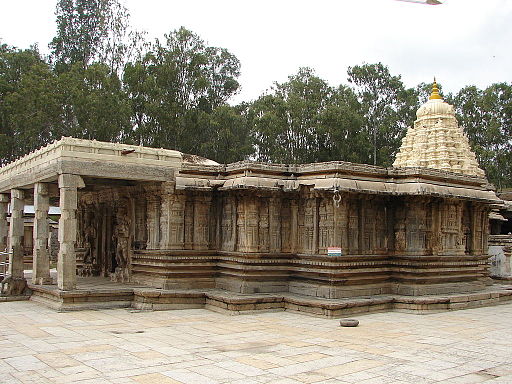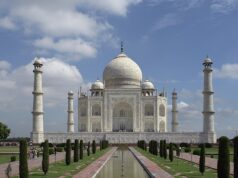The mini-desert at Talakadu is on the left bank of the Kaveri river, 45 km (28 miles) from Mysore and 133 km (82 miles) from Bangalore in Karnataka, India. This desert was once a beautiful city. There was a time when there were more than 30 temples. But now most of the temples are buried in the sand with lingams representing the 5 faces of Lord Shiva.
Some information about Talakadu Temples
Mallikarjuna Temple
Mallikarjuna Temple is devoted to Goddess Brahmarambigai and houses Mallikarjuna Swamy’s tiny Shivling. Devotees will notice footsteps on the Shivling, which are said to belong to Kamdhenu if they look closely. Inside the temple grounds are also Sandhya Ganpati, Veerabdrar, and Chamundiswari Samadhi.
Arkeshwara Temple
Talakadu must-see Arkeshwara Temple, the city’s primary attraction. The booth features a Shivling, making it one of the five temples visited by pilgrims during Panchalingadarshan, a 12-year celebration.
Pathaleshwara Temple
Another important pilgrimage site in Talakad is Pathaleshwara Temple. It is thought to be one of the city’s early temples established by the Ganga rulers. The Shivalinga, which changes color at different times of the day, is the main attraction of the Pathaleshwara Temple.
History of the Talakadu Name
The Talakadu name has a long and illustrious history. Talakadu has been the subject of numerous stories. But the most famous story is that of Tala and Kadu, two identical brothers, walking into the forest to cut down trees. They both felled a tree that was revered by wild elephants. They later discovered that the tree they had cut down contained an idol of Lord Shiva. That is why those elephants revered this tree. They were in the shape of sages, not elephants. The tree was miraculously healed after that. Since then, the location has been known as TalaKadu. In Sanskrit, it’s known as “Dala-Vana.” Two stones have been set in front of the Veerabhadra Swamy temple to honor these twin brothers. People also think Rama stayed in the “Talakadu” desert before embarking on his journey to Lanka.
Talakadu’s History and Mythology

Talakadu, often known as the Benaras of the South, is a fascinating site for searchers and believers alike, with a great number of old Hindu temples and their religious significance. Many archaeologists and historians have spent years trying to figure out how the river changed course and came to circle around the sand mounds, but if you ask the locals, they have a very simple explanation for this strange environment. The history of this desert is very serious. Because many kings ruled this desert. Till the middle of the 14th century, the Hoysala kings ruled over Talakadu. After that, it went under the possession of the feudatories of the Vijayanagara sovereign. In 1610, the city of Talakadu was conquered by the Raja of Mysore after that because of a natural calamity this town became a desert. This happened during the rule of the Wodeyars. But local stories and myths say otherwise. People believe that this happened because the Wodeyar king wanted to acquire the jewels of Queen Alamelamma. For that, he sent an army after Queen Alamelamma. Then she drowned herself in the Kaveri river and also threw the jewel in the water. The legend states that before she died, she cursed the place May Talakadu be filled with sand, Malangi become a whirlpool, and the Kings of Mysore be barred from having children, creating a desert where the river Kaveri makes magnificent whirlpools. They were terrified when the monarch learned about the curse. As a result, Raja Wodeyar created an idol of Alamelamma and decked it with exquisite embellishments. During Dusshera, the pooja (worship) of Alamelamma is still held at the Mysore Palace. Whatever the reality is, half of Talakadu was buried in the sand, and the Wodeyar family did not have children, so they carried on the lineage by adopting from close relatives.





















